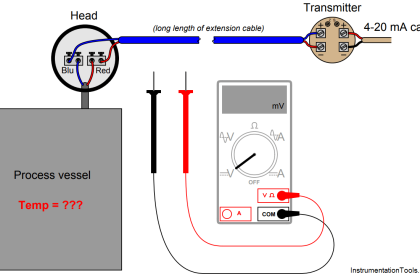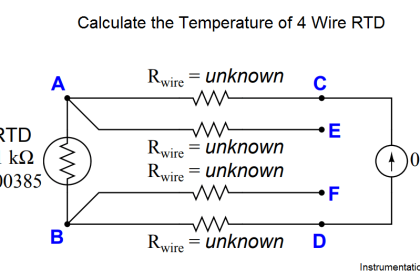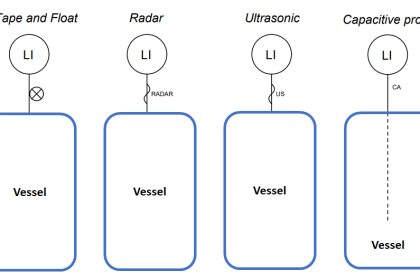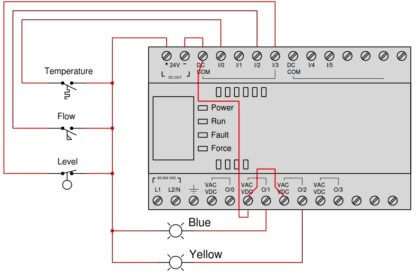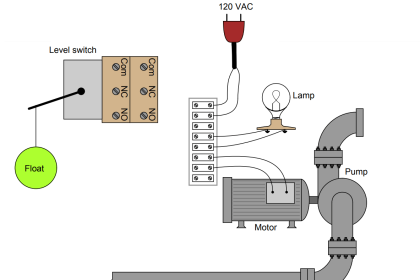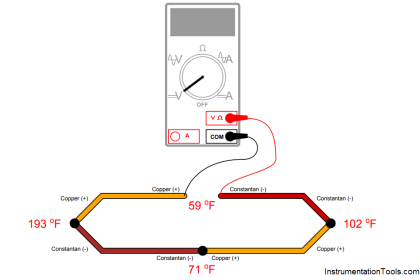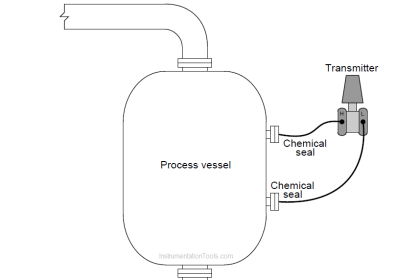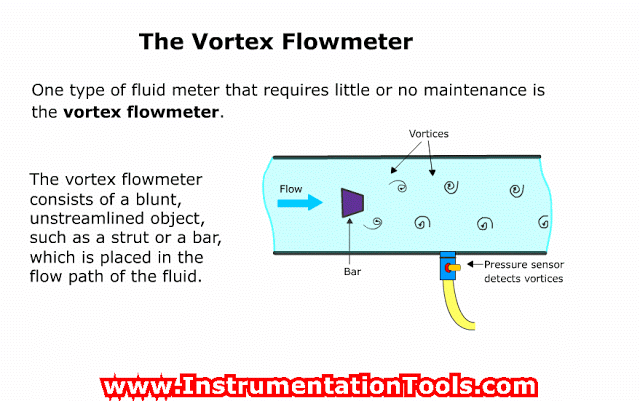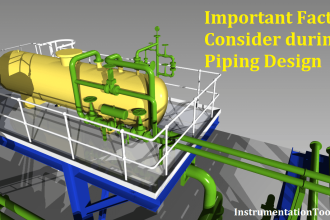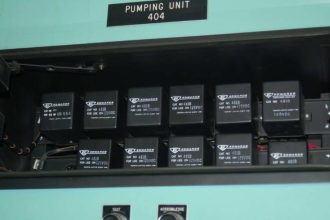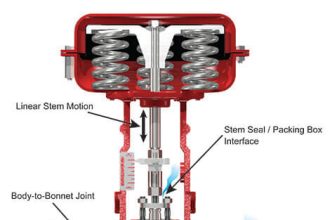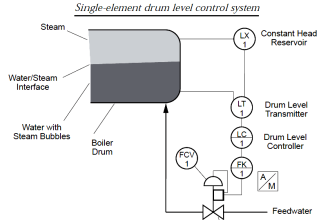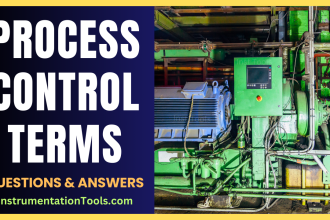In the following baffle/nozzle system, the nozzle pressure is allowed to react against any external force by generating a force with a bellows unit, to push the baffle away from the nozzle.
The particular bellows in this mechanism are designed to be “slack,” having little spring effect to self-restrain its motion. Whatever force generated by the pressure acting against the bellows’ surface area gets directly transferred to the lever:
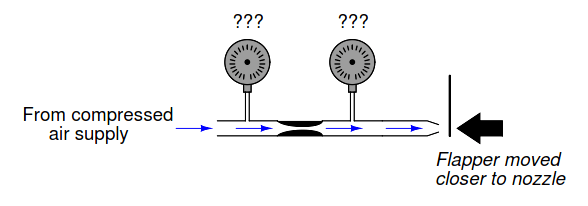
What will happen in this system if someone pushes the lever toward the nozzle with their thumb? Explain every step in your reasoning – don’t just describe a final result!
Now, suppose we modify this system to have a bellows with a larger diameter:
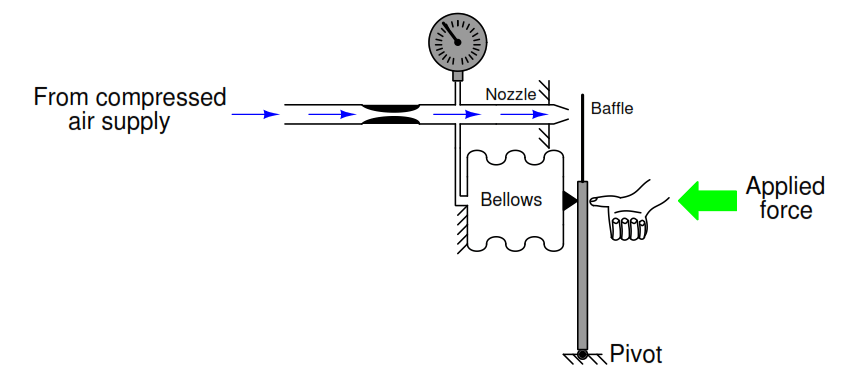
What will happen in this system if someone pushes the lever toward the nozzle with the same amount of force as before (with the smaller bellows)? How will this system respond to the same stimulus? Again, explain every step in your reasoning – don’t just describe a final result!
What will happen in this system if we were to take the original (smaller) bellows mechanism and push on it with the same force but at a position closer to the pivot point than the bellows? As usual, explain every step in your reasoning:

1. Explain, in simple terms, what effect bellows size has on the gain of the system, and why.
2. Suppose the compressed air supply pressure was 10 PSI in both cases. If this supply pressure were to drop to a lower value such as 8 PSI, what effect (if any) would this have on the gauge pressure in each scenario as the system responds to the same amount of applied force? Why or why not?
3. Determine whether or not the output pressure would rise to the same level with force applied to the lever if the air supply was cut off (and the supply tube plugged so that air could not leak out).
4. A common misconception among students first analyzing these mechanisms is that the output pressure is being generated by the bellows: that is to say, that the action of collapsing the bellows by the force of the hand is what makes the air inside become compressed. Explain why this is a misconception, and further explain how and why the resulting pressure arises.
Share your answers with us through the below comments section.
Read Next:
- Bellows Pressure Sensor
- Baffle Nozzle Assembly
- Pressure Regulator Principle
- Pneumatic Transmitter
- Instrument Mechanic Interview
Credits: Tony R. Kuphaldt
